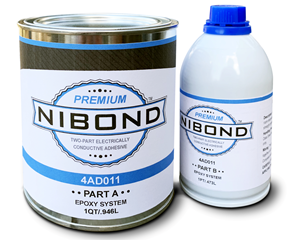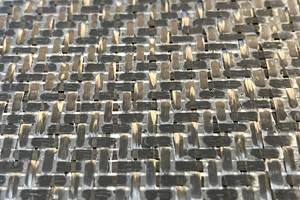Multifunctional composites could help achieve structural supercapacitors for EVs
In a recent study, functionalized graphene/nanofiber electrodes showed 2X modulus, strength and 5-10X multifunctional efficiency.

Structural batteries and structural supercapacitors offer a potential solution for electric vehicles (EVs) because they can not only handle structural loads but also store energy and/or produce power. For future ground and air mobility, this offers reduced weight and volume for structures and batteries, as well as more miles between recharging. However, current electrodes for batteries and supercapacitors suffer from poor mechanical performance because they are typically made from brittle materials.
A team led by Texas A&M University (College Station, Tex. U.S.) chemical engineer, Jodie Lutkenhaus, has produced structural supercapacitor electrodes using reduced graphene oxide (rGO), innovative chemistry and aramid nanofibers to mimic the natural material nacre, achieving Young’s modulus and ultimate tensile strength that are 220% and 255%, respectively, higher versus pure rGO electrodes, as well as multifunctional efficiency values of 5–13.6 compared to current electrodes at <1.
Nacre-like multifunctional composite
In an article published in the journal Matter, Lutkenhaus and her team describe using dopamine to functionalize (chemically bond to) rGO and then combine this material with aramid nanofibers to form a composite. The paper explains, “We hypothesized that nature-inspired materials could transform the poor mechanical properties of supercapacitor electrodes into those mimicking nacre, bone, or wood to realize exceptionally high values of multifunctional efficiency.”
Nacre (mother-of-pearl) consists of 95 vol % aragonite (calcium carbonate), chitin, and proteins yet exhibits toughness three orders of magnitude higher than aragonite alone. Its superior mechanical performance results from its hierarchical composite structure: its constituent particles and matrix are organized differently at each geometric scale or level (e.g., nano-, micro-, meso-, macro-) and combine with efficient interfaces between these levels to achieve high modulus and strength while mitigating crack propagation (see the blog “Magnetic 3D printing the next generation of tailored composites”).
The Lutkenhaus team knew that graphene-based nacre-mimicking electrodes have been shown to perform very well electrically. The challenge was to improve their mechanical properties. The team sought to use the hormone and neurotransmitter dopamine to functionalize rGO. Dopamine also self-polymerizes into the highly adhesive polymer polydopamine (PDA). Dopamine mimics the structure of adhesive proteins in nacre-lined mussels, while PDA has been utilized in Li-ion batteries and supercapacitors as an electrode material, separator modifier and binder. However, only a handful of studies have focused on incorporating PDA in rGO composites.
As explained in the Matter technical paper, “We sought to combine for the first time the excellent mechanical properties of PDA-modified rGO with high-modulus, high-tensile-strength Kevlar aramid nanofiber to improve the multifunctional efficiency.” Aramid nanofibers have also been used in a variety of applications including energy storage.
Good structural properties
Nacre-mimicking structural supercapacitor electrodes based on branched aramid nanofibers and dopamine-functionalized rGO sheets were fabricated using vacuum filtration and their performance was evaluated. The excellent mechanical properties exhibited are reported to result from increased hydrogen bonding caused by the dopamine functionalization and chelation caused by Ca2+ ions.
The Lutkenhaus team reports that this approach is applicable to other nacre-mimicking structures which should lead to a new stronger multifunctional family of nature-inspired materials. “Future work should focus on improving the electrochemical performance, either by adding porosity to improve the ionic mobility or by adding a pseudocapacitive material to enhance energy density. To the best of our knowledge, the obtained Young's modulus and multifunctional efficiency is the highest among the electrically conductive composites with low aramid nanofiber content. This leads to strong structural supercapacitor electrodes with high electrochemical performance.”
Related Content
CAMX 2022 exhibit preview: Conductive Composites
Conductive Composites expands its portfolio of multifunctional electrically conductive composite materials with a new line of NiShield nonwovens and NiBond electrically conductive two-part structural epoxy adhesive.
Read MorePontacol thermoplastic adhesive films are well-suited for composite preforms
Copolyester- and copolyamide-based adhesive films eliminate the need for sewing threads or binders when stacking laminates while improving the final part’s mechanical properties.
Read MoreMaterials & Processes: Tooling for composites
Composite parts are formed in molds, also known as tools. Tools can be made from virtually any material. The material type, shape and complexity depend upon the part and length of production run. Here's a short summary of the issues involved in electing and making tools.
Read MoreMaterials & Processes: Fabrication methods
There are numerous methods for fabricating composite components. Selection of a method for a particular part, therefore, will depend on the materials, the part design and end-use or application. Here's a guide to selection.
Read MoreRead Next
Composites end markets: Energy (2024)
Composites are used widely in oil/gas, wind and other renewable energy applications. Despite market challenges, growth potential and innovation for composites continue.
Read MoreFrom the CW Archives: The tale of the thermoplastic cryotank
In 2006, guest columnist Bob Hartunian related the story of his efforts two decades prior, while at McDonnell Douglas, to develop a thermoplastic composite crytank for hydrogen storage. He learned a lot of lessons.
Read MoreCW’s 2024 Top Shops survey offers new approach to benchmarking
Respondents that complete the survey by April 30, 2024, have the chance to be recognized as an honoree.
Read More









.jpg;maxWidth=300;quality=90)
















